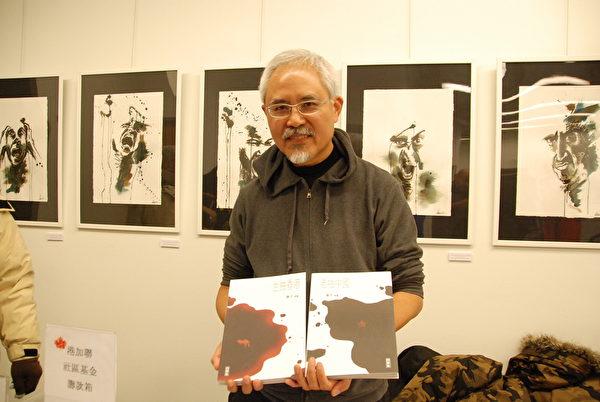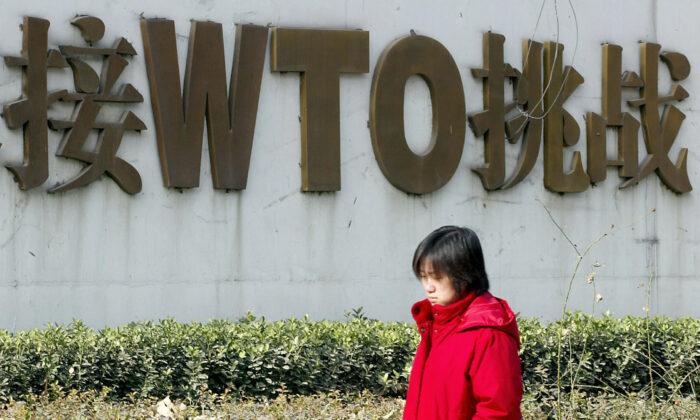Commentary
Since last October, six departments of the Hong Kong government have criticized the cartoons of Zunzi, Hong Kong’s veteran political cartoonist, for being “factually untrue” and “unethical.” The message is clear: Ming Pao, the newspaper where the cartoons were published, had to stop publishing Zunzi, who had produced pro-democratic cartoons for four decades. Finally, Ming Pao gave in, and Zunzi’s cartoons ceased publication on May 14.
Few journalists and columnists dared to discuss this landmark development publicly. However, after the cessation, Zunzi’s cartoons are still being shared passionately on social media, reflecting how much Hongkongers love him.
Zunzi’s political cartoons have become an important part of Hong Kong culture because they were used as sources in public exams. Besides being sarcastic, his cartoons are sometimes prophetic. For example, a three-panel cartoon strip in 1991 shows the then Hong Kong Governor David Wilson and a Chinese cadre pushing a dim sum trolley, on which is a heart-shaped cake with the words “Hong Kong people ruling Hong Kong” and a lit candle. They are ready to celebrate a baby’s birthday. Wilson shows confidence in the cadre who is solely handling the cake, but to Wilson’s surprise, the cadre shoves the candle into the baby’s mouth and swallows the whole cake.
What a prophecy. All the promises to the baby, which symbolizes Hong Kong after 1997, are withdrawn by the communists bit by bit. Britain’s courtesy acts to the disadvantage of the Hongkongers.
Immediately after Ming Pao ceased publishing Zunzi’s cartoons, Hong Kong public libraries removed all of his books, along with those of other pro-democracy authors and those on the June 4 incident. Some lucky to remain on the shelf are whitewashed peculiarly. For example, for the Chinese version of The Gate of Heavenly Peace: The Chinese and Their Revolution, 1895–1980 by historian Jonathan D. Spence, the library catalogue system has the first part of the title removed, as the phrase is regarded as sensitive and breaking the “red line.”
This looks like a Hong Kong version of the Cultural Revolution, during which—for a long decade, 1966–76—Red Guards struggled against Mao’s political opponents, such as Liu Shaoqi, and reactionary “feudalistic” and “imperialistic” cultures.
Zunzi’s career would have been impossible without the freedom of the press during British rule. At the same time, Zunzi is Hong Kong’s veteran political cartoonist, the most widely known political cartoonist in the English-speaking world in the decade before the Second World War was certainly David Low, whose works are widely used by history teachers and students. It is difficult to miss his works; all the political cartoons in history textbooks with the signature “Low” are his masterpieces. One depicts the joint invasion of Poland by Nazi Germany and the Soviet Union after the signing of the “non-aggression pact” in 1939, with Hitler and Stalin bowing politely before each other and greeting each other respectively as “the scum of the earth” and “the bloody assassin of the workers.”
Low worked for the Evening Standard from 1926 to 1949, and all significant politicians at that time, both at home and abroad, could not escape his satire. Nazi propaganda minister Joseph Goebbels protested to the British Foreign Office. However, Britain was not Hong Kong, and Evening Standard was not Ming Pao. Despite protests from totalitarian regimes, Low continued to ridicule those who deserved it. All that Nazi Germany and Fascist Italy could do was ban the paper.
Low’s achievement did not end there. He was knighted one year before he died, and his home in Kensington earned a blue plaque. Apart from Low, several other British political cartoonists have been knighted. This points to political cartoons as an important branch of modern culture, and the social status of renowned political cartoonists is comparable to that of eminent writers.
The attitude towards political cartoons bespeaks the level of openness in society. The day Zunzi appears in the Honors List will be when Hong Kong is reborn.





